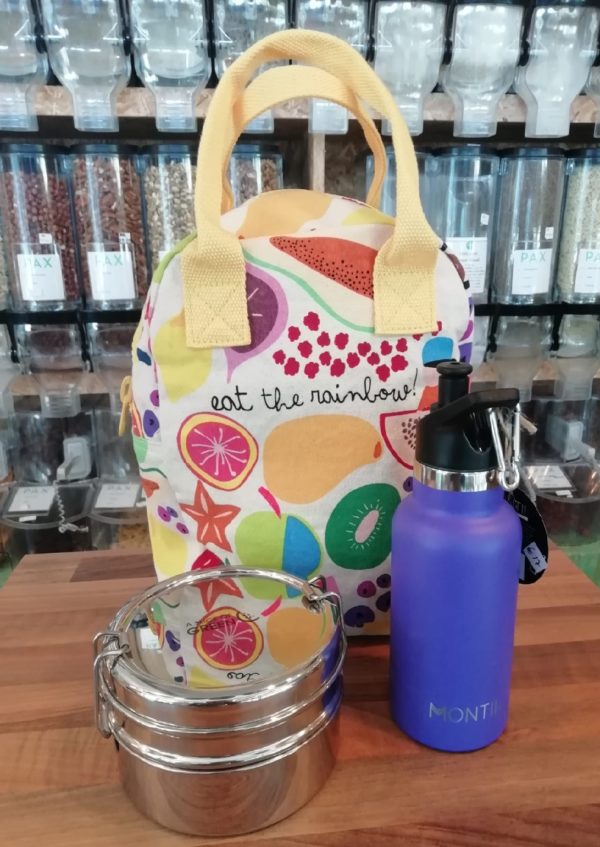It seems impossible, but soon schools will reopen, and we might all be in a panic to buy the gear we’d forgotten about, when books were nearly thrown out the window during lockdown home-schooling, and all the pencils rolled under the couch.
The owner of another Irish business that we greatly admire, Jiminy.ie, Ireland’s leading supplier of eco-friendly toys and crafts, recently shared her best advice on back to school shopping: BUY NOTHING NEW. Now, that may sound counterintuitive when you get a list of supplies from the school, or a wish list from your teenager for something they are certain will make them more productive, but we have to recognise that we’ve been conditioned to think all these items have to be brand new in packaging to tick the boxes.
The biggest challenge might be managing expectations your child has about having new items, so the best place to start is by having a conversation about whether they already have a functional lunch box, school bag and stationary from last year that can be reused. Many kids now understand the impact that purchasing new items can have on both the environment and the family budget—they are much more clued in than we give them credit for! Customising items by adding some decoration may be interesting enough to bring them around to the idea of choosing to reuse.
Older siblings, cousins or friends might be a great source of school books, uniforms and sports gear, as are local parents’ groups. I have a shortlist of friends with children just a couple years older than my own that I start by asking if we need something specific, and if they don’t have the goods they can often suggest someone who might.
For anything you can’t find new, try to find an eco-friendly alternative. Coloured pencils and sharpeners last far longer than markers that dry out and cannot be recycled, and there are biros with ink cartridge refills (instead of buying a pack of eight and throwing them all away when the ink runs out). Notebooks made from recycled paper, or at least FSC-certified new paper, and ideally with a cardboard cover, can be fully recycled at end of life.
Reusable items to replace disposable ones are key, so if your child doesn’t yet have a durable water bottle and lunch box, consider investing in stainless steel or silicone options that will survive a thousand dings. Cling film can be replaced by beeswax wraps or washable snack bags, and reusable cutlery and a handkerchief will make it a real meal.
The next quandary can be what to pack for lunch, as we want to be respectful of guidelines promoting healthy eating and protecting other children with potential allergies. Also, it’s important that items are easy to prepare ahead for a few days, and will suit adult and kid palates, and won’t be the same day-in and day-out. Have your child help you plan the weekly lunch menu, and spend some time on the weekend or in the evening preparing food that will meet the school’s criteria and avoid waste as much as possible.
We know nuts are out, which is tricky when we have relied on peanut and almond butter as staple foods for quite a while. So, I’ve been experimenting with alternatives like seed butter, which can be made simply by toasting seeds (sunflower, pumpkin or a mix) in the oven, letting them cool and then using a food processor to grind them into a smooth spread—this takes about five to ten minutes—that can be flavoured with some sugar for a sweeter version, or some spices or chilli flakes for something savoury.
Hummus can be made more interesting by using any bean or lentil instead of chickpeas, which really transforms the flavour. We really like to use black or pinto beans with some tomatoes, smoked paprika and chilli, cannellini beans with dried tomatoes and herbs, or Puy or Beluga lentils with a bit of mushroom stock for a richer flavour. Both the hummus and seed butter can be used as dips for raw carrots, peppers or cucumbers, or with bread or crackers, and the protein will keep everyone full for the afternoon.
Go for chopped seasonal fruit for a sweeter treat, and dried fruit when there are not other good options. Buy yogurt in larger pots and put that into a smaller container, to avoid multiple small pots. Another homemade treat is pudding made from chia seeds (1/4 cup) and some kind of liquid (at least ¾ cup), like oat, coconut or almond milk or a fruit juice. Mix these with a sweetener if needed or cocoa powder if desired, and let sit in the fridge for a few hours or overnight. This can be eaten as is, or topped with fresh fruit or jam for a real treat.
All the best for the return to school!



